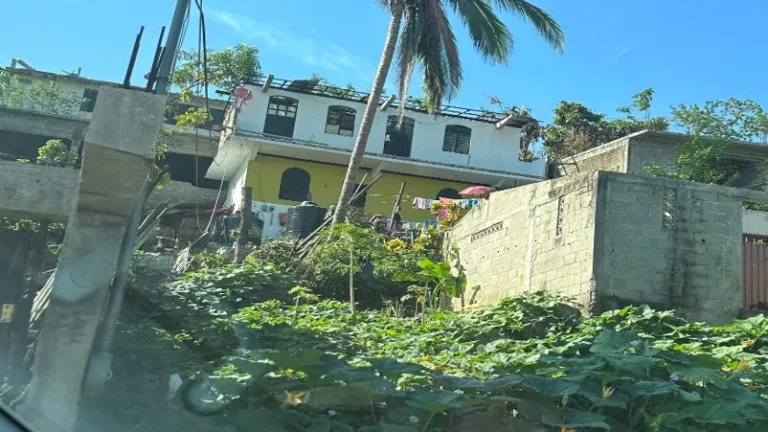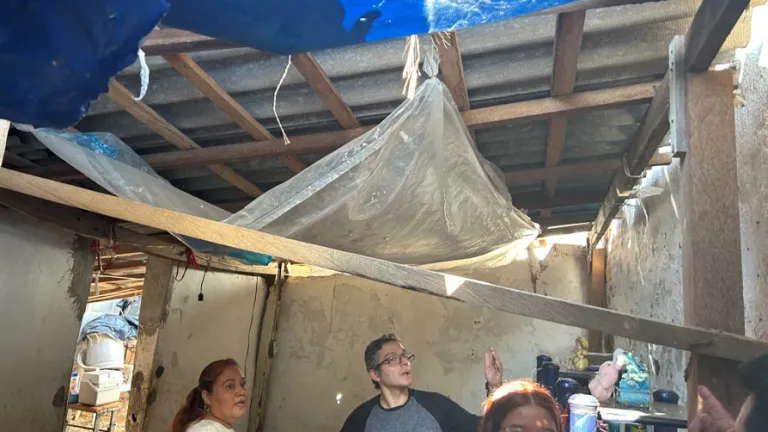Hurricane Otis Update 2025
Jessi Api provides update on destruction and rebuild from Hurricane Otis.
Shortly after the Feast of Tabernacles, on October 27, 2023, Hurricane Otis struck Acapulco, Mexico. Home to approximately 900,000 residents, many of whom depend on the tourism industry for their livelihoods, the city was unprepared for what became an unprecedented disaster. Mexican news outlets first reported the sudden arrival of Hurricane Otis—a Category 5 storm with sustained winds of up to 165 miles per hour—late at night. With no warning or evacuation notice, the hurricane’s impact was both devastating and historic, marking the first time a storm of this magnitude had made landfall in this part of the Pacific.
Local brethren described Hurricane Otis as the most destructive storm they had ever experienced. Families were awakened by terrifying winds that roared like a freight train and sounded, as some described, “like the end of the world.” With no time to prepare, many took shelter in bathrooms or central rooms, clinging to safety as flying debris shattered windows and tore apart structures. Outside, the storm uprooted trees and toppled power poles, filling the night with deafening crashes and creaks. Roofs were ripped away, and personal belongings were sucked into the air by the forceful winds. Torrential rain flooded homes, soaking whatever was left behind. In the darkness, families huddled together and prayed for survival.
In the aftermath of the disaster, conditions remained critical. Widespread flooding had submerged much of the low-lying areas, while the air was thick with the stench of contaminated black water and scattered debris, compounding the severity of the situation. Numerous buildings had been devastated, with furniture, clothing, shattered glass doors and windows swept into Acapulco Bay.
To this day, the marina is still lined with damaged vessels—many capsized, wrecked, or even overturned onshore. As of the latest reports, authorities have confirmed at least 52 fatalities, with 32 individuals still unaccounted for. An avalanche also resulted in additional loss of life. Amid the widespread destruction, all members of the Church were safely located and expressed deep gratitude to have survived.
As Acapulco began the slow process of recovery, another setback occurred less than a year later. In 2024, while the city was still struggling to rebuild, Hurricane John struck. Though a Category 3 storm, Hurricane John inflicted significant damage due to the already fragile infrastructure. The storm caused widespread power outages, water shortages, flooding, and mudslides. Massive boulders—some larger than small homes—were dislodged and crashed onto roads, sheds and homes. One mudslide near a member’s home stranded the family, making it impossible for them to return for several days.
On November 26, 2023, the Mexico home office, with partial funding from the Good Works program, was able to purchase a used church van. This vehicle was instrumental in delivering aid. Two trips were made to Acapulco to provide critical provisions to the brethren. During the first trip, the extent of the devastation became clear: every member’s home had been significantly impacted. Many were living together in single rooms under makeshift roofs fashioned from tarps and salvaged materials. Access to power, clean water, food and basic supplies was scarce. The delivery of water, canned goods and mosquito repellent was met with deep appreciation, as these were among the most urgently needed items.
Following this visit, a decision was made to repair the damaged roofs of members' homes and continue supplying food, clean water, and cleaning products. Upon returning to the U.S., additional funds were raised to support this initiative. It was estimated that completing all necessary repairs would take approximately one year.
In March 2024, Jesse Api drove his utility vehicle to Mexico to begin the rebuilding efforts. Initially, the plan had been to hire local labor in Acapulco. However, due to labor shortages and unreliability—workers often left jobs incomplete—this approach proved challenging. Jesse was soon joined by Aaron Dominguez, a deacon from Colorado who volunteered his time, and Roberto Hernandez, a member of the Mexico City congregation. Eventually, local laborers were hired at three times the normal rate.
Another challenge was sourcing construction materials. Supplies within Acapulco were scarce and costly, so materials had to be transported from cities located three to six hours away. To ensure durability against future storms, the new roofs were constructed using reinforced concrete. However, the weight of the concrete required rebuilding foundations and walls for structural support. Excavation for these new foundations was labor-intensive due to the rocky terrain—some rocks were as large as small houses. In one case, a massive boulder obstructed a planned corner foundation. After exhausting efforts to break it apart, the team adapted by using the boulder itself as the cornerstone, successfully drilling into it.
Transporting cement to homes presented further logistical issues. Narrow streets prevented truck access, and no equipment was available to pour concrete directly. Instead, all concrete had to be mixed by hand in the streets and carried in 80–100-pound, five-gallon buckets up makeshift staircases built from wood and stone. The physically demanding nature of the work meant that pouring a roof could take up to three days. Construction continued through rainstorms and high winds.
Despite the many obstacles, after nearly a year of dedicated labor, the project was completed. Each family once again had a secure roof over their heads. The brethren in Acapulco have expressed profound gratitude for the support they received. Amid the chaos, destruction, and uncertainty, they wondered how they would find food and water and how they could possibly rebuild. Their joy was immense when they realized their prayers had been answered through the kindness of individuals they had never met.
When asked who had provided such generous assistance, they were told about the Good Works program, as well as the generous contributions from church congregations and individual donors. The members of the Acapulco congregation send their heartfelt thanks to all who extended a helping hand during one of the most difficult times in their lives.











































